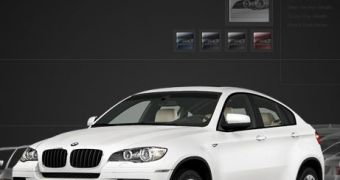Microsoft has long diversified its core business past its initial focus on developing software platforms for the desktop. In this regard, prominent members of the automotive industry have, in one way or another, embraced the products of the Redmond company. Ferrari is running a supercomputer with Windows HPC Server 2008, Fiat integrates the Microsoft Auto platform into its cars, Ford has the Sync in-car info-entertainment and communications system, just to name a few examples. BMW is the latest car manufacturer to get “touchy- feely” with Microsoft, literally, via the BMW Konfigurator.
Developed by VectorForm, the BMW Konfigurator is set up to deliver what the application's developing company referred to as “pure configuration pleasure.” Based on Microsoft Surface, the BMW Konfigurator makes touch an integral experience of customizing a BMW. There are numerous interaction capabilities built into the application, as the video embedded at the bottom of the article will illustrate (via Steve Clayton).
Via Surface, the BMW Konfigurator is capable of recognizing gestures, multi-touch input, and even objects, including car keys, and musters. According to VectorForm, musters are real-world objects that can be used to interact with Microsoft Surface.
“Official musters made their grand debut when they were introduced on the BMW project. Each muster- approximately 20 in number – was created using images from BMW catalogs, using authentic paint chips and actual materials from the car. The musters represented interior and exterior color and texture options, wheels, trim, and accessories as an interactive tool for viewing and selecting particular car choices. Our musters were designed with the customer in mind, to provide an interactive selection process through the use of real-world objects,” revealed a member of the VectorForm team.
For the time being, with prices of $12,500 and $15,000, Microsoft Surface is only accessible to business users. However, at the start of October 2008, while in London, Microsoft Chief Executive Officer Steve Ballmer indicated that the Redmond company was working to drop the price of Surface to a level where it would enable the product to go mainstream.

 14 DAY TRIAL //
14 DAY TRIAL //